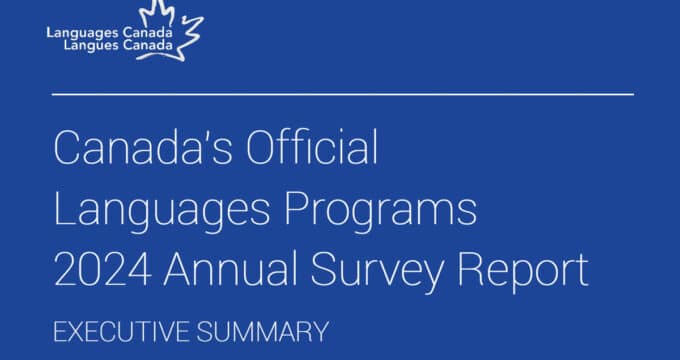Opportunities abound in digital English language learning market
Last year, the worldwide language learning market (all languages combined) generated a hefty US $58.2 billion. When combined with revenues from language services such as localisation, interpretation, and translation, this figure jumps to US $82.6 billion. The global language learning market is changing at rapid pace due to the adoption of cost-efficient technology-based products and the migration away from classroom and print products, according to Ambient Insight, an international market research firm specialising in e-learning and mobile learning. Ambient predicts that the future lies in English language learning products, which generated US $35.9 billion in 2011 (offline and online combined). This represents 61.7% of the total language learning market, making it the largest concentrated revenue opportunity in the international language learning market. And like most things these days, the biggest potential is online. By 2016, expenditures on digital English language learning products will account for 7.3% (or US $2.5 billion) of the global English language learning market. The current digital English language learning revenues are heavily concentrated in five learning product types:
- Self-paced elearning
- Digital referenceware (etextbooks)
- Collaboration-based learning
- Mobile learning apps
- Mobile learning Value Added Services (VAS)
In their report entitled "The Worldwide Market for Digital English Language Learning Products and Services: 2011-2016 Forecast and Analysis," Ambient explains that the substantial growth in revenues for digital English language learning products over the forecast period is due to several convergent catalysts:
- Consumer demand for digital language learning products
- The recent explosion of subscription-based mobile learning VAS
- The digitisation efforts in academic markets across the globe
- Migration to digital formats by major international publishers
- Government-mandated English language learning initiatives in school systems
- The shortage of English teachers in high-demand countries
Digital trends in the classroom
There are now major digitisation efforts going on in the school systems around the world, notably in South Korea, Thailand, China, Taiwan, Turkey, Brazil, Russia, France, Poland, Spain, the Ukraine, Mexico, Japan, Singapore, United Arab Emirates (UAE), the UK and the US. Some examples include:
- In June 2011, the South Korean Education Ministry mandated that all instructional content in all primary and secondary schools must be 100% digital by 2015. By 2015, every school child in South Korea will be carrying a personal learning device.
- Turkey intends to equip over 15 million students with tablets in the next four years, which represents a huge delivery system for learning technology suppliers. The Turkish government began distributing the tablets to schools in February 2012 and (like South Korea) intends to have all print-based textbooks replaced with etextbooks in four years.
- Thailand also began distributing tablets to their primary students in June of this year. Yet due to teacher-training and curriculum challenges, some fear the results might mimic those of Peru's One Laptop Per Child (OLPC) project.
These trends are driving major international print publishers of English language learning textbooks and test prep content to move rapidly to digital formats. Cengage Learning, McGraw-Hill, Houghton Mifflin Harcourt, Macmillan, Pearson, Oxford University Press, and Cambridge University Press are all aggressively shifting their language learning product portfolios to digital formats. As schools across the globe migrate to digital content, a massive amount of commercial, open, and indigenous print-based English language learning content will be moved to digital formats. This represents a significant revenue opportunity for suppliers that offer conversion services. According to Cambridge University Press, there are over 100 countries in which English is designated as the "first foreign language" taught in schools, and the British Council reports that there are over 30 additional countries in which English has an official status.
Government mandates promote English
New government mandates for school systems designed to increase proficiency in the English language have been initiated in countries around the world. The governments of Rwanda, South Sudan, Turkey, the Russian Federation, South Korea, Japan, Malaysia, Vietnam, China, Brazil, Chile, and Argentina have instituted broad-reaching federal programmes designed to increase English proficiency. Some of these mandates are minor adjustments to current mandates. For example, in June 2011, Saudi Arabia began offering English language learning starting in fourth grade, two years earlier than the previous mandate. And prior to February 2012, English language learning began in first grade in Dubai in the United Arab Emirates (UAE). Now, English is introduced to Dubai students in kindergarten. Other mandates are sweeping in scope:
- Rwanda is a predominately French-speaking country with over 10 million people, yet in 2009 the government mandated that all primary education had to be taught in English.
- When South Sudan gained independence from Sudan in 2011, the new government proclaimed that English would be the national language even though very few people in the new country speak English.
- In late 2010, the Russian Federation mandated that fluent English would be a requirement to become a civil servant starting in 2012.
- In 2011, the Ministry of Education and Training in Vietnam made English language learning compulsory starting in fourth grade. The government intends to have 80,000 English language teachers in the country by 2020, but is having difficulty finding qualified teachers.
- In 2011, Japan made English language learning compulsory in all Japanese primary schools. Previous to this mandate, students were introduced to English in junior high school.
- In December 2011, the government of Thailand launched their 2012 English Speaking Year project with the ambitious goal to teach English to 14 million students in 34,000 state schools across Thailand from pre-primary to university age.
For examples of university systems around the globe switching to English-medium instruction, please see our article "Trend alert: English spreads as teaching language in universities worldwide."
Teaching training opportunities
In the presence of minor and major mandates like this, it should be no surprise that there is now a significant shortage of English language teachers in several countries, and this is a catalyst for technology-based products and services. The shortage of teachers is driving the demand for both self-paced products and live remote tutoring by native English-speaking teachers based outside the respective countries. For example, in May 2011, the Turkish government announced that they would recruit 40,000 native-speaking English languages teachers as part of a four-year billion dollar initiative to increase English language skills in their primary and secondary schools. The first phase of the initiative began in 2011 and involved hiring English teachers in the US to tutor Turkish students remotely in real time via collaboration-based learning technology.
Top growth countries
Ambient's report forecasts the revenues for digital English language learning products and services across seven regions: North America, Latin America, Western Europe, Eastern Europe, Asia, Middle East, and Africa. The report also identifies the top buying countries in each region and provides a five-year forecast for each of those countries. Asia has the highest growth rate followed by Africa, Latin America, and Eastern Europe. Western Europe and North America are the most mature markets and have relatively low growth rates. The region with the lowest growth rate is North America, which masks the fact that it spends the most on digital English language learning products. The top buying country for digital English language learning in 2011 was the US, followed by South Korea, China, Japan, and Brazil. By 2016, the largest buying countries will be China, South Korea, the US, Brazil, and Japan, respectively. Turkey, India, the Russian Federation, Spain, and Poland will also be in the top ten buying countries by 2016.
In terms of growth, the countries with the highest growth rates are Malaysia, China, Romania, Ukraine, Indonesia, Brazil, Poland, India, Georgia, and the Russian Federation. The growth rates in Malaysia, China, Romania, and Ukraine are all above 30%, more than twice the worldwide aggregate growth rate.
There are spikes in spending in certain countries due to a variety of factors. For example, the Brazilian Ministry of Tourism intends to provide English training to 306,000 tourism professionals in preparation for the World Cup in 2014 and the Olympics in 2016. For the full report, please see "The Worldwide Market for Digital English Language Learning Products and Services: 2011-2016 Forecast and Analysis."
Most Recent
-
The surging demand for skills training in a rapidly changing global economy Read More
-
US issues corrected student visa data showing growth for 2024 while current trends point to an enrolment decline for 2025/26 Read More
-
Survey finds US institutions expanding agency engagement and focusing on new student markets Read More


















